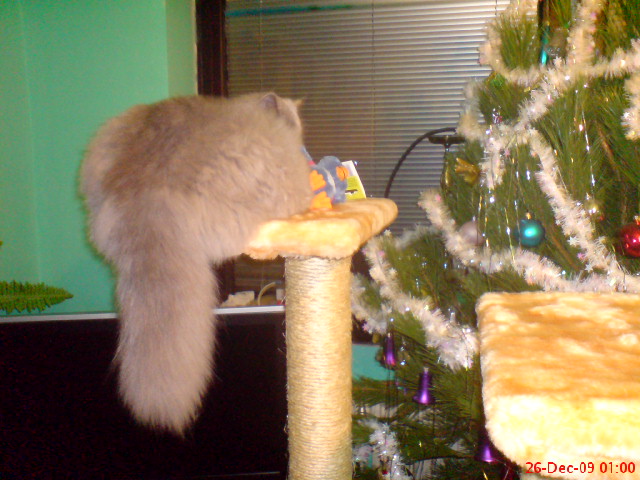Persian cats are known for their beautiful long coats and adorable flat faces, but they can also be prone to certain health issues. In this comprehensive guide, we’ll explore the common sickness symptoms that Persian cat owners should be aware of, including Polycystic Kidney Disease (PKD), Brachycephalic Airway Syndrome, and Hypertrophic Cardiomyopathy (HCM).
What are the Symptoms of Polycystic Kidney Disease (PKD) in Persian Cats?

Polycystic Kidney Disease (PKD) is a genetic condition that affects the kidneys of Persian cats. As the name suggests, this disease is characterized by the formation of cysts within the kidneys, which can eventually lead to kidney failure. Let’s take a closer look at the symptoms of PKD in Persian cats:
- Increased Thirst and Urination: One of the earliest signs of PKD is an increase in thirst and urination, as the kidneys struggle to function properly.
- Nausea and Vomiting: Cats with PKD may experience nausea and vomiting, which can be less obvious but are significant indicators of reduced kidney function.
- Decreased Appetite and Weight Loss: Persian cats with PKD may show a diminished appetite, leading to weight loss over time.
- Lethargy: As the disease progresses, cats may become more lethargic and less active.
- Blood in Urine: While less common, hematuria (blood in the urine) can be a symptom of PKD.
- High Blood Pressure: Hypertension can develop as a secondary complication of PKD.
When do Persian Cats Typically Develop Polycystic Kidney Disease (PKD)?

Polycystic Kidney Disease (PKD) is present in Persian cats from birth, but the symptoms typically appear around seven years of age. Ultrasound is the primary method for diagnosing PKD, as it can detect the presence of cysts even in young kittens.
What are the Symptoms of Brachycephalic Airway Syndrome in Persian Cats?
Brachycephalic Airway Syndrome is a condition that affects the respiratory system of Persian cats due to their flat, shortened faces. This can lead to various breathing-related issues. Here are the common symptoms of Brachycephalic Airway Syndrome in Persian cats:
- Breathing Difficulties: Persian cats with this condition may exhibit labored breathing, especially during exercise or in hot weather.
- Snoring and Stridor: Noisy breathing sounds, such as snoring and stridor, are common due to the narrow airways.
- Exercise Intolerance: Persian cats with Brachycephalic Airway Syndrome may show reluctance to engage in physical activity due to their breathing difficulties.
- Cyanosis: In severe cases, the cat’s gums and tongue may appear blue-tinged due to inadequate oxygenation.
How Can Brachycephalic Airway Syndrome Symptoms be Alleviated in Persian Cats?
To help alleviate the symptoms of Brachycephalic Airway Syndrome in Persian cats, the following actions can be taken:
- Weight Management: Maintaining a healthy weight can reduce the severity of breathing difficulties in Persian cats.
- Cool Environment: Keeping the cat in a cool environment can help reduce the strain on their respiratory system.
- Surgical Intervention: In some cases, surgical correction of the airway may be necessary to improve breathing function.
What are the Symptoms of Hypertrophic Cardiomyopathy (HCM) in Persian Cats?
Hypertrophic Cardiomyopathy (HCM) is a heart condition that can affect Persian cats. It is characterized by the thickening of the heart muscle, which can lead to various health issues. Here are the common symptoms of HCM in Persian cats:
- Lethargy: As the heart condition worsens, Persian cats may become more lethargic.
- Difficulty Breathing: Dyspnea (difficulty breathing) can occur due to fluid accumulation in the lungs.
- Sudden Changes in Behavior: Persian cats with HCM may exhibit sudden changes in behavior, such as hiding or becoming more withdrawn.
- Collapse or Sudden Death: In severe cases, Persian cats with HCM may collapse or die suddenly due to cardiac arrest.
How Can Hypertrophic Cardiomyopathy (HCM) be Monitored and Managed in Persian Cats?
To monitor and manage Hypertrophic Cardiomyopathy (HCM) in Persian cats, the following steps can be taken:
- Regular Check-Ups: Regular veterinary check-ups are crucial for monitoring the health of a Persian cat’s heart.
- Echocardiography: This diagnostic tool, which uses ultrasound to assess the heart’s structure and function, can help in the early detection and management of HCM.
- Medications: Various medications can be prescribed by veterinarians to help manage the symptoms and slow the progression of HCM in Persian cats.
In conclusion, Persian cats are susceptible to several health conditions, including Polycystic Kidney Disease (PKD), Brachycephalic Airway Syndrome, and Hypertrophic Cardiomyopathy (HCM). By being aware of the common sickness symptoms and taking proactive steps to monitor and manage these conditions, Persian cat owners can help ensure the well-being and longevity of their beloved feline companions.
References
- The Spruce Pets: Polycystic Kidney Disease in Cats
- Cornell University College of Veterinary Medicine: Polycystic Kidney Disease
- Untamed: Symptoms of Polycystic Kidney Disease in Persian Cats
